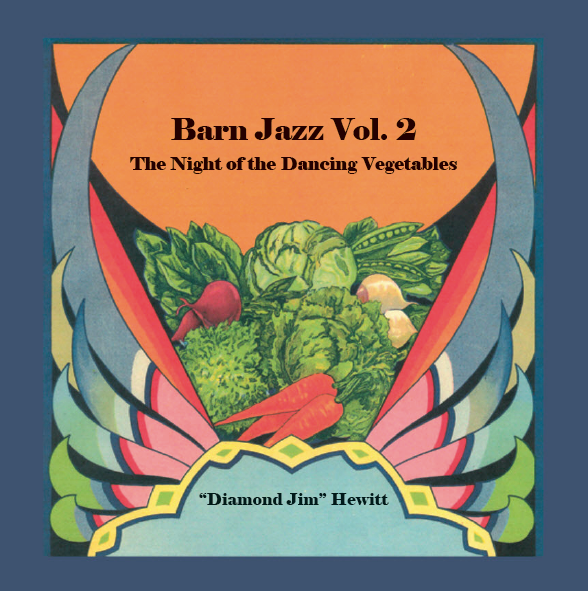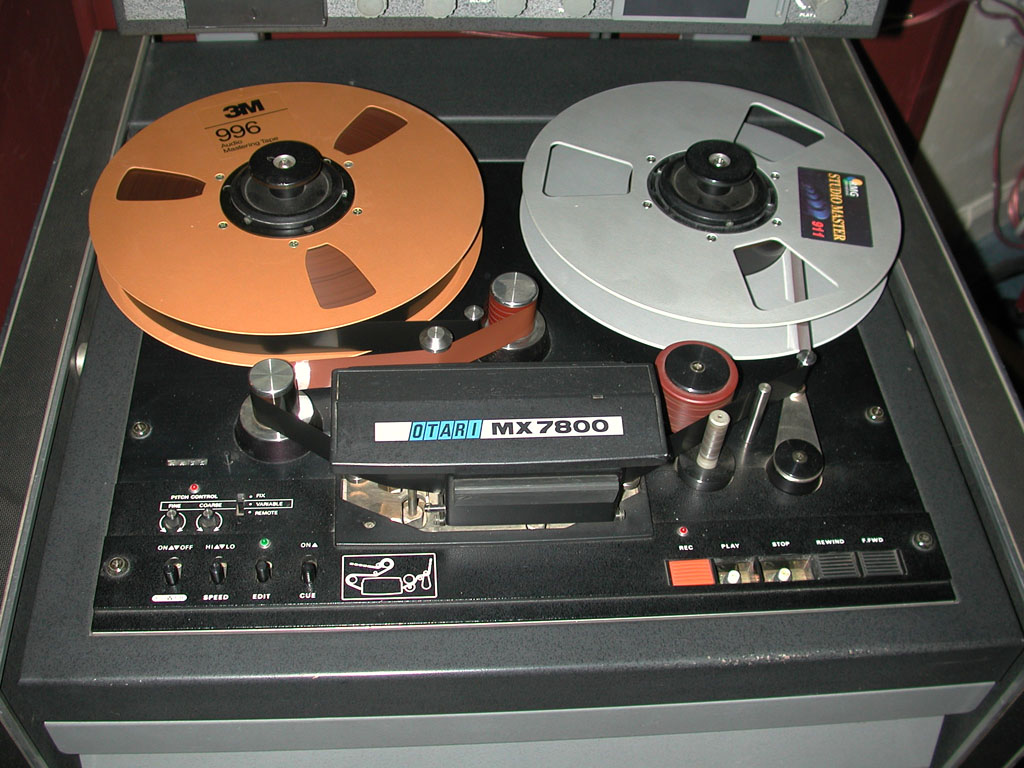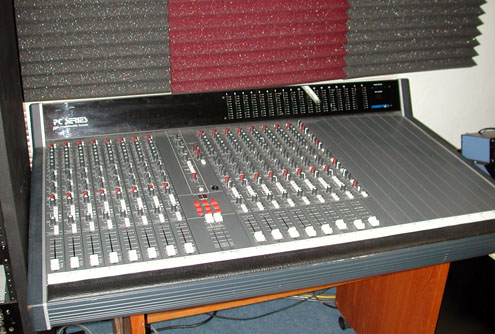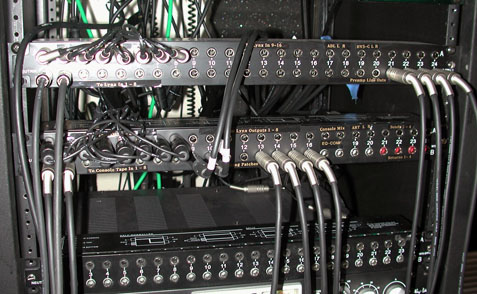
Cover art courtesy of John Medley, Oracle AZ, from his collection of vintage vegetable crate designs.
Audio and Music Production

Cover art courtesy of John Medley, Oracle AZ, from his collection of vintage vegetable crate designs.
“danielRize” original indie-folk CD project for a 25 year old singer-songwriter (aka Phillip Levenson) from Fort Worth, TX, really an amazing CD with heartfelt, poetic imagery and fine playing. CD’s will be ready by April 1.
Renee Arner, “Banish Misfortune”, traditional and original Celtic harp tunes, we’ve been working on this for the better part of a year and its finished, ready for manuf. Features a guest performance from Aneko Arika (“March Forth Kenya Kids”) from Kenya, on African drum on the song “Spirit Man”.
Projects currently underway:
Phil Maffetone, original folk CD with wife, Coralee Thompson and additional instrumental overdubs from yours truly. Phil and Coralee are local Oracle physicans and musicians who have made numerous cd’s with help of luminaries in Nashville and LA (including legendary Rick Ruben). Phil’s CD has all original songs that are very well written and played. Should be out sometime later this year. No title yet. (n.b. it came out in 2012 as “Living on a Dead End Road”).
Ready to record a new client, Broken Chair Ranch band for a marathon two days this coming weekend (Mar 26, 27, 2011).
Have done several tape transfers for Jerry Aman from Saddlebrooke, including a 25 year old 1/4″ reel-to-reel piano recital from his son, Mark, that came out very well, as well as a 1955 1/4″ of his wedding.
Working on a small video project for Stone Age (Butcher, Coven) compiling a nice podcast for him from an old 1985 clip of Coven playing at a party.
Sometimes you live right. The Chicago Store in downtown Tucson, on E. Congress street, had a store-wide clearance this weekend, and I could not resist. I had not been in there for years, even though I spend a lot of time working downtown. I remember going inside on a whim, maybe 10 years ago, looking over the selection of violins and mandolins, and having Joe “Chicago” try to talk me into a purchase. Now old Joe and his brother, Phil, have sadly gone on to the hereafter. Their son, Mark, owns and runs the shop.
Many a famous player who has passed through Tucson, including Billy Gibbons of ZZ Top, has had the privilege of perusing the “attic” section, normally off limits to civilians. According to a newspaper article, musicians would point out this and that instrument or piece of gear, and have the items shipped out. It sounds like an old tale where a sailor stumbles upon the lost plunder of a pirate ship.
Well this time the “attic” (the old dusty roped off upstairs area) was open to the public for the first time. So I went in right after opening time, 9 AM, not too many musicians in sight this early. After a short recon, up the stairs I go, in great anticipation.
OK, its not a pirate hoard, but a Sargasso Sea of old live sound and DJ gear, neglected guitar amps in various conditions of old age and disrepair, nothing much of interest here, except maybe that old Crate vintage amp…..
On to the next level, up the creaky old wooden stairs with all kinds of warning signs saying “Keep Out!”. Surely this is where all the old string instruments go to die. I stare at maybe several thousand cases for violins, violas, cellos, some instruments lying around out of the case, some hidden inside. Hopeless! I am beginning to feel like Indiana Jones…
After a few minutes of poking around, I find that most of the cases are empty, or contain badly maimed and broken old instruments. I am not a luthier, so I get ready to leave, but no… One last time, I ask the universe, “is there anything here I need to see?”.
Having faith (if not a touch of mental illness), I find myself staring at what turns out to be a very old rectangular, tan Roth violin case. I open it up, and behold, just about what I expected, an old beat up violin. She has a dark brown to black finish (“ox blood” according to my friend Tom B.), maybe something that the devil would play when going up against Charlie Daniels.
But hey, its playable, and I am looking for something to rent to my students, or maybe use for a different flavor while recording. I pluck the out of tune strings, thinking, “this one sounds pretty good!”
I put it back in its drab looking case, walk away, and start poking into a few more of the cases stashed like old coffins in the corner. Nothing. An old fellow is now up there as well, looking at a cheap Chinese violin that he found in one of these cases. I show him that its not very good, and a 1/2 size anyway.
He then goes over to where the old Roth case sits, and I say to myself, “Hey buddy, not today”. I go over and pick it up again. I look around and find Mike, an affable salesman for the store, showing another guy an enormous old bass fiddle in the next aisle over.
Mike looks at the violin I am holding, and agrees that it needs some work, and has no maker’s tag (the store tag says “no name, German, $400”). I am thinking maybe $200 tops?
So he says, “how about $75?”. I reply, “I think I can do that!”
So back downstairs, I lug down the old Crate amp that they wanted $39.00 for as is. Mike plugs it in, it does not turn on. Fuse is good. OK, so he says the speaker alone is worth at least that, maybe more. He is right, its a great old vintage Crate with the old style wooden crate box covering the sides. So it does not work – Mike has the name of a great local Crate amp tech. $20 – sold! (n.b. I later replaced the fuse holder, and now it works!)
About now I am feeling pretty good about this plundering of the old attic. On the way out I ask Mike, do you have any great old Mandolins? He says not really, except maybe that old Martin over there. Originally marked at $1500, on clearance for $500.
I pick it up. Its an old Martin turtle back, tag says its vintage 1898 – 1910. Mother of pearl inlay, and it does look very old, but in fair condition. It is not really playable due to a warp in the neck, but it sounds pretty good from what I can tell. Its not exactly the kind of mandolin I normally play. But 1898?
I say, “well can’t really afford $500, I have a limit today.” Mike comes back with, “well this weekend I could do $400…you come come back, the sale runs through Sunday”. Here we are, then, the spirit of old Joe, channeled through Mike, who obviously has been around long enough to know the drill. So I counter with “$300”, but I feel pretty bad about that, I know its probably worth at least $1000 or more in the collector market, but hey, its me mano-a-mando with Joe-Mike, and its worth a try. But Mike is not budging, and in fact I think he’s having second thoughts about the $400.
So I go up to pay for the amp and violin, and then that old voice clicks on inside my head, “don’t be an idiot, get the thing!”.
I turn to Mike and say, “go ahead and bring it over, let’s ring her up”. Some of the other sales guys are now aware of the action, and ask Mike, “who’s getting the Martin? How much did you sell it for?”. I am now feeling pretty good about this.
“$400 it is, and worth every penny!” (so says the ghost of Joe “Chicago” who by now is smiling. I can feel it).
Recently Mix magazine published an article, “Analog Rules”, describing the audio production methods used by several top producers and engineers. Key to these methods is the combination of analog and digital techniques. This is nothing new, but what was interesting was the renewed interest in tape as key component. Tape imparts a unique sound to tracks as a result of many factors including saturation (a kind of pleasing distortion, often termed musical distortion), subtle variations in the speed and imperfect contact with the heads, as well as the influence of discrete analog electronics (resistors, capacitors, transformers, etc.) on the signal path.
Now in 2010 digital audio has improved so much that in conjunction with good analog outboard gear (preamps, compressors, eq) it sounds very good indeed. However I recently acquired a 2-track SONY MCI JH-110 1/4″ tape deck from a Nashville engineer, Chris Mara, who runs Welcome to 1979.com, a primarily analog recording studio. Using this deck as a final link in the mastering chain has given me one more tool. I can take a previously recorded digital mix, bounce it to tape, and bring it back into the DAW, and compare it to the original mix. Often (although not always), I like the added nuances that tape provides. I describe the tape sound as a kind of “rounding and smoothing” of the audio, especially for transients. Sometimes this dulls the mix, in which case if I like the original digital version, I will keep that. But more often than not I prefer the tape version.
Tape as a production medium was nearly pronounced dead 20 years ago as digital tape and later digital audio workstations (a.k.a. “souped up computers with professional audio interfaces and sequencing software”) gained acceptance. Digital was welcomed for its improved editing, low noise, and relatively lower cost compared to tape. However digital audio has had from the start its detractors, including such notable musicians as Neil Young, and top flight engineers such as Bob Clearmountain, according to the Mix article.
I also track directly to tape and dump the tracks into the DAW. In that case I usually do not have to bounce in the final master stage. However with the cost and extra work of using tape, and the fact that many of my clients are amateur musicians or part-timers who are not always fully prepared, I tend not to use this technique for tracking as often as I might.
Combining tape and digital is the same approach that many engineers, including those mentioned in the Mix article, are using. Nice to know that this hybrid approach is working for so many others. I certainly like it, and will continue to employ it in my own music production.

REVIEW of CALABAZAS 2003-2006 CD by David Auerbach
This is real country music, ladies and gentlemen. The day before I listened to the Best of CD by various Calabazas artists, I came up with the following rule, which in an attack of Texas-sized ego I’ll call Dave’s law of fake country: If a song makes use of any electronics save a microphone and some speakers, and maybe, just maybe a mixing board, it’s not country music, regardless of how ‘Southern’ the singer sounds. And we’re not too sure about that mixing board. Now, there’s nothing wrong with liking Carrie Underwood so long as you admit that you’re listening to a type of pop music. Don’t get me wrong. I like Carrie Underwood. I like pop music sometimes. But calling it “country” when it’s not peeves me just a little bit. I wonder how many of our “country” stars live in the country. Here’s a hint: Nashville has 607,000 people in its metropolitan statistical area. Maybe that’s a small town in China, but not here. And Dallas-Fort Worth-Arlington-etc-etc-etc would be considered a major metropolis anywhere. And one more thing: Texas and Tennessee don’t have a duopoly on countryside. I think I lost the point. What was it? Ah, yes, this CD is real country, even though they call it Jazz for reasons that remain unclear.
It has non-electric instruments and non-modified voices and that’s it. There’s no synth, no computer making their voices sound like they can do things they can’t, no fake Southern accents, no fireworks or laser shows, and no “earworm” beats designed by sound engineers in Los Angeles (metro population: 16 million plus). It’s just a few ordinary folks who are singing because they like to sing, not because they want to be rich or famous or popular. And they live in Oracle, which you can see is in the country – for the time being, at least – just by looking around. This isn’t Hollywood or Dallas or even Nashville, it’s just Oracle. It admits what it is, unlike big-money “country” pop music. But it’s good. It’s music for listening, not dancing or marketing or whatever else.
Track 6 (Gina Lollobrigida, The Carnivaleros) is awesome. I didn’t know a harmonica could do that. Track 5 (Lost in the Graveyard, Carnivaleros) is spooky like Kansas before a storm where the ground is a smooth featureless green and the sky a creamy gray – and that’s it. Track 4 (Vamp in the Middle, Greg Morton Trio) is like a gathering of friends at the state park. Several songs are actually about here – sky islands, cacti, and whatnot. Track 9 (Sky Island Home, Freddie Terry) feels like there are real saguaros around, not cartoon ones. You can laugh (just a little) at the one and only Bob Dylan (wink wink) on Track 12 (I Am Bob Dylan, Rod Mac Donald) if you want. I know that not all of these singers are from this particular patch of countryside, but you can tell they love it the same as a native – maybe more. It has the obligatory dueling banjos and home on the range tribute, though you have to listen pretty closely to hear that tune – I’ll let you find it. Really, they have something for most moods.
Buy this CD. Support Oracle. Support Oracle State Park. I’m keeping my copy.
(David is the Music Critic for The ONE Newsletter, Oracle. He is taking this CD with him to China on a teaching gig.)
When mixing and mastering, there are many ways to approach the workflow, especially when working both inside and outside the “box”. In this case my “box” is an Intel Quad Core, 4 Gig, XP Pro system using SONAR 8.5 PE for tracking and mixing (and occasionally Reaper 3), and Wavelab 6 for mastering and CD production.
Here is my workflow:
Using SONAR, where I originally laid down the tracks, I mix out through my console and outboard and then back into SONAR, and export the final stereo mixdown to a project \Mix folder. The mix version retains the original bit depth and sample rate, usually 24/48 or 24/88.
In Wavelab I load each mix file separately for mastering, create the master section fx chain, and save that as a per-song preset. I will set the loudness using the WL meters, or the meters in UAD Precision Limiter, set to K-14. I also use UAD Precision Maximizer, or possibly the Fairchild 670 plug, to get the sound where I want it in terms of loudness and clarity, warmth, etc.
Then I render out to same bit depth, with final gain set for the target avg RMS (I use the Global Analysis tool all the time to check this), generally -14 DBFS plus or minus a db. No dither yet. Note that this loudness level is average perceived loudness, set to less than today’s pop music standard, i.e. it retains much of the original dynamic range and is still loud enough to sound good on CD compared to many other similar tunes. As I am mostly doing acoustic, folk, Celtic, electronica, country and bluegrass, i don’t feel the call to squashing the sound just to make it competitive for radio play, as has been the trend in recent years. Anyway…..
Each of these 24-bit mastered files is kept in a \Master folder in the project subdirectory, so I can keep track of when I last rendered out a final version. At any time I can go back to the mix versions restore the preset for the tune, and work it some more if I need to.
I create a CD project montage in Wavelab, set order of the tunes, do the fades (top and tail), spacing, and only then apply dithering to the final rendered stereo file and basic audio CD file. That way I can adjust final levels in the montage if I want to before dither.
It might sound like a lot of work but it gives me pretty good control over each song, without having to render the entire CD montage with all of the original per song plugs, which takes a while. The final render only applies dither.
After the final render of the project I can then burn reference CD’s, which i listen to in a variety of contexts (home stereo, car stereo, iPod). Once its all good, a final master is burned onto a high quality CD-ROM, such as Apogee or Tayo Yuden, at 8X speed (which my DAW seems to like better than the often quoted 1 or 2X speed).
Here are the clips I referred to in my previous post about the effects of partial phase cancellation when recording vocals with two mics and two artists. The first clip shows the results of two tracks, each with the vocal mic but the bleed from the second mic is retained. The second clip shows what happens when I edited out the bleed on the second mic track.

Just finished a voice over recording session for a radio play. The play will be on an upcoming CD release for the heavy metal group, Butcher. The voice over was performed by two actors spaced 3 feet apart, facing each other. The large diaphram condensor mics were set to a cardioid pattern, but of course there was considerable bleed between the two.
I used a U87a on the female actor’s voice, and a Michael Joly modded MXL V67 on the male’s voice, each recorded to separate mono tracks in SONAR. The U87 was clear and powerful, full of presence, as I expected, but the sound from the V67 was thin and hollow sounding, which I noticed only when playing both tracks back together. This was not what I was expecting from the Joly modified V67.
Then it hit me! The bleed into the U87, being 3 feet away, was introducing a 3 ms partial phase cancellation for the male actors voice, when listening to the U87 track.
Its about 1 millisecond delay per foot of separation, that’s recording 101 for you. And yes it was considerably noticeable. However when I muted the U87 track and listened to the male actor voice soloed, it sound very good. Not U87 good, mind you, but much better. Considering the V67 is a $300 mic (after the Joly mods), it holds up well as a 2nd stringer to the U87.
So rather than try a different mic I just dealt with the phase cancellation in the DAW, when mixing. Its a simple matter to edit the tracks to eliminate the bleed, as long as the two voices are reading distinct parts and not talking over each other. Fortunately that is the case for this script, just a few places where you will hear both voices together.
Being out of phase is something that recording engineers really need to pay attention two, especially for vocals, when recording with multiple mics. Having better isolation also helps, but I did not have the room nor the available “gobos”. I might have used one of Ethan Winer’s Real Traps Portable Vocal Booths in this situation, but I wanted the talent to face each other as they were carrying on a “conversation”.
I will post some examples of this partial phase cancellation for anyone to hear, so you know what I mean.

Soundtracs PC Midi Console

Patch Bays
© 2012-2024 Barn Jazz® Media, LLC ♦ ♦ Contact Us
"Barn Jazz" is a registered trademark of Barn Jazz Media, LLC
Recent Comments